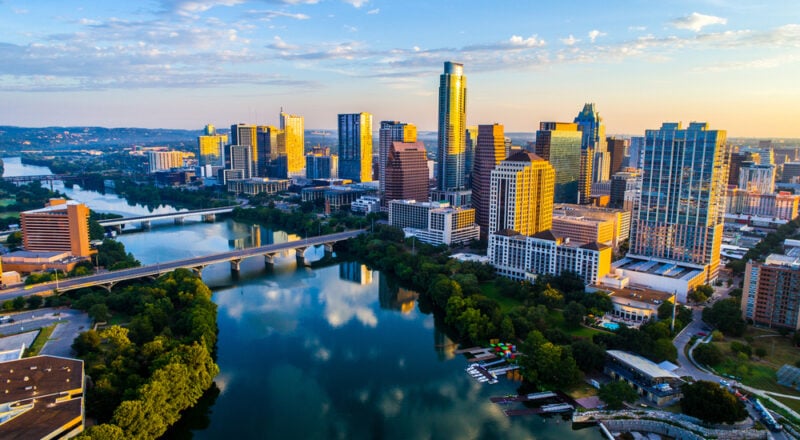The 30 Best Places to Live in Texas: Top Cities and Towns

Texas offers an impressive range of cities and communities that cater to diverse lifestyles, career goals, and budget requirements.
The state’s robust economy, no state income tax, and varied geography create opportunities for professionals, families, and retirees to find their ideal home base.
This comprehensive ranking examines 30 outstanding Texas locations based on factors including cost of living, employment opportunities, school quality, safety, and local amenities.
From major metropolitan areas like Austin and Houston to growing suburbs such as Plano and The Woodlands, each location brings distinct advantages for residents seeking quality of life improvements.
Here are the 30 best places to live in Texas:
30. Lewisville
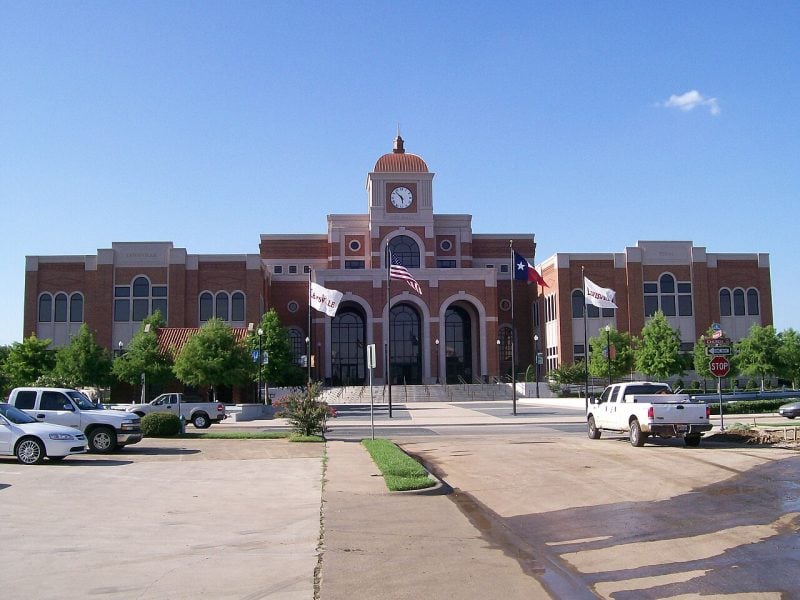
Lewisville sits as a Dallas suburb in Denton County with a population of 128,313 residents. The city offers an urban-suburban mix that appeals to diverse lifestyles.
Most residents rent their homes, with median home costs around $368,200. Home appreciation over the past decade reached 15.7%.
The city centers around Lake Lewisville, providing extensive outdoor recreation opportunities. Timbercreek Park offers trails for nature enthusiasts.
Lewisville maintains good air quality with an index of 66 out of 100. The area features numerous restaurants, coffee shops, and parks throughout the community.
The annual Western Days festival celebrates local Texas heritage. Old Town Lewisville and Music City Mall provide shopping and entertainment options for residents.
29. Mansfield
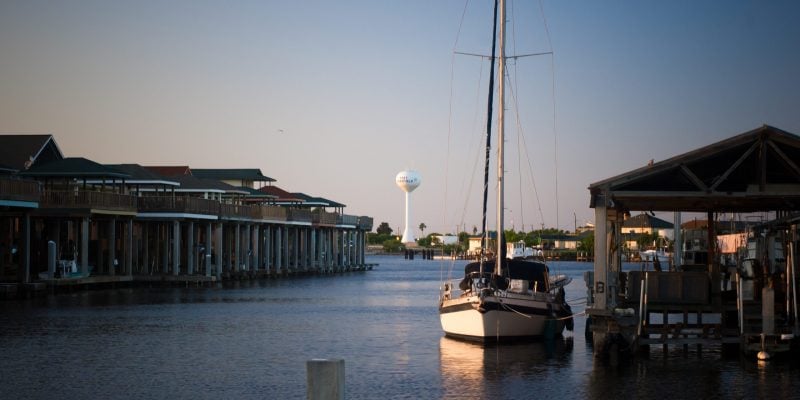
Mansfield earned the 27th spot nationwide on U.S. News & World Report’s 2025-2026 Best Places to Live rankings. The city also claimed 9th place among Texas cities on the same list.
This Fort Worth suburb sits strategically between Dallas and Fort Worth. Residents enjoy convenient access to both major metropolitan areas while maintaining suburban tranquility.
The city boasts a median household income of $117,680 and median home values of $364,136. These strong economic indicators reflect the community’s affluent character and desirable location.
Mansfield ISD serves as a significant draw for families considering the area. The school district’s reputation contributes to the city’s appeal as a place to establish roots.
With nearly 80,000 residents, Mansfield offers a balance of suburban living and urban amenities. The community consistently appears on various rankings of Texas’s best places to live.
28. Coppell

Coppell stands as one of Texas’s most desirable suburban communities. This Dallas County city has earned recognition as the second or third best place to live in Texas for 2025.
The city serves over 42,000 residents with excellent schools and family-friendly amenities. Most residents own their homes in this dense suburban environment.
Coppell’s location between Dallas and Fort Worth provides convenient access to both major cities. Residents can reach Dallas in approximately 30 minutes by car.
The community offers strong job prospects through proximity to DFW Airport. Multiple shopping centers and recreation facilities serve local needs.
Home values rank among the highest in North Texas. The revitalized Old Town Coppell district features dining and shopping options that strengthen community connections.
27. Keller
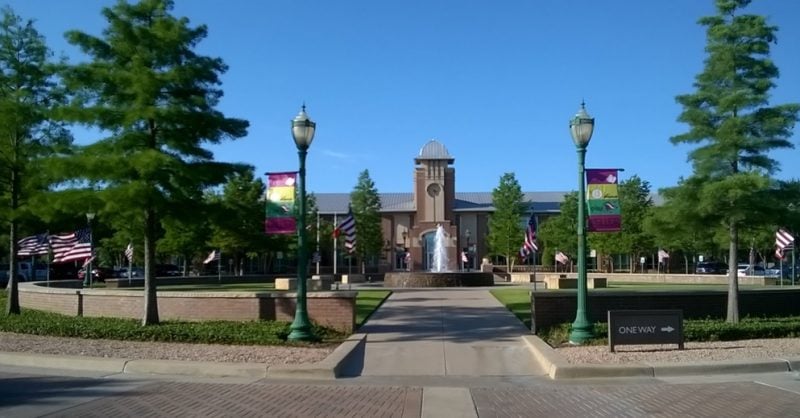
Keller sits strategically between Dallas and Fort Worth, offering residents convenient access to both major metropolitan areas. This affluent suburb combines small-town charm with modern amenities.
The city consistently ranks among Texas’s best places to live. Keller earned recognition as the #6 Best Place to Live in America by US News and World Report from 2017-2018.
Residents enjoy high-quality public schools and excellent educational opportunities. The community features some of the highest home values in North Texas, reflecting its desirable location and amenities.
Major highways provide quick connections to Fort Worth, Arlington, and Dallas. This accessibility makes Keller attractive to professionals working in the broader Dallas-Fort Worth metroplex.
The rapidly growing suburb maintains its community feel despite expansion. Residents appreciate the balance between suburban tranquility and proximity to urban conveniences.
26. Denton

Denton offers a unique blend of college town energy and Texas charm. The city hosts two major universities, creating a vibrant educational atmosphere.
Downtown Denton features a bustling arts scene with restaurants, shops, and cultural venues. The area attracts young professionals and students seeking urban amenities.
Robson Ranch provides an active adult community with extensive amenities. Rayzor Ranch offers newer development with mixed residential and commercial spaces.
Oakmont presents upscale neighborhoods with larger homes and lots. The community appeals to families seeking more spacious properties.
Denton County consistently ranks high for livability factors. The area scores well in education, housing, healthcare, and cost of living categories.
The city maintains strong community spirit through local events and festivals. Residents benefit from the cultural richness that universities bring to the area.
Housing options vary significantly across different neighborhoods. The market offers everything from affordable student housing to luxury developments.
25. Allen
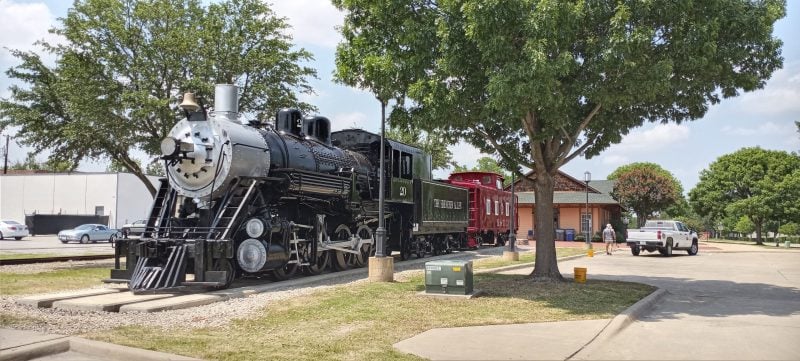
Allen ranks as a top suburb in the Dallas-Fort Worth metroplex with a population of 107,684. The city consistently appears on Texas’s best places to live lists due to its strong quality of life factors.
This affluent Collin County community offers residents a dense suburban feel. Most residents own their homes, contributing to neighborhood stability and pride.
Allen provides convenient access to both Dallas and Fort Worth while maintaining suburban tranquility. Residents can enjoy urban amenities without sacrificing community atmosphere.
The city features excellent public schools and maintains low crime rates. Coffee shops and parks are abundant throughout the area, supporting an active lifestyle.
Twin Creeks offers upscale homes with golf course access. Watters Creek provides urban-style living near shopping and dining options.
Allen’s strong economy attracts families and professionals seeking quality suburban living. The combination of safety, schools, and location makes it highly desirable for North Texas residents.
24. Tyler
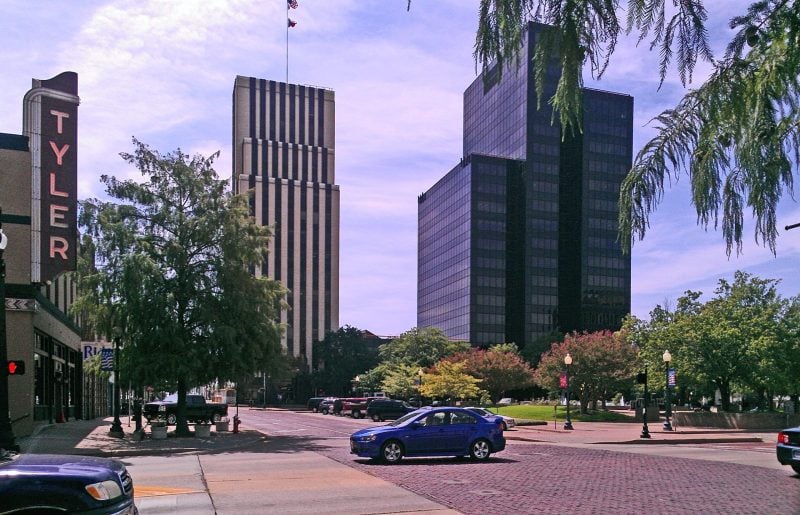
Tyler stands out as one of Texas’s most livable cities, earning recognition in multiple national rankings. The city received a livability score of 676 out of 1,000 and secured a spot among the top 100 best places to live in America.
This East Texas city of 107,718 residents offers a dense suburban atmosphere where most people own their homes. Tyler ranks highly for its economic climate and overall quality of life compared to other U.S. cities.
The city excels in several key areas that attract residents. Healthcare options are excellent, and the school district maintains high standards. Tyler also provides good access to nature and outdoor activities.
Cost of living remains reasonable compared to larger Texas metros. The city features numerous coffee shops and parks that contribute to its community appeal.
Tyler combines small-town charm with urban amenities, making it an attractive option for families and professionals seeking quality living in Texas.
23. Waco
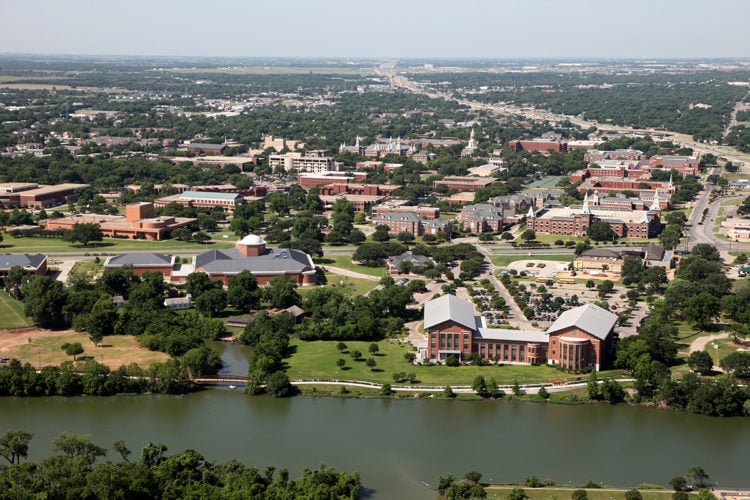
Waco sits along the Brazos River in central Texas, offering residents a blend of historical character and modern amenities. The city serves as home to Baylor University, contributing to its vibrant community atmosphere.
The downtown area features local shops, restaurants, and the iconic Waco Suspension Bridge. Magnolia Market attracts visitors and adds to the city’s economic vitality.
Waco’s neighborhoods vary significantly in character and housing costs. Areas like Sanger Heights showcase historic charm, while newer developments offer contemporary living options.
Lake Waco provides recreational opportunities for outdoor enthusiasts. The city maintains parks and green spaces throughout various districts.
Housing costs remain relatively affordable compared to major Texas metros. The presence of the university creates a diverse population mix of students, faculty, and long-term residents.
Crime rates rank moderately for Texas cities. Public schools serve the community alongside private educational options.
22. Amarillo
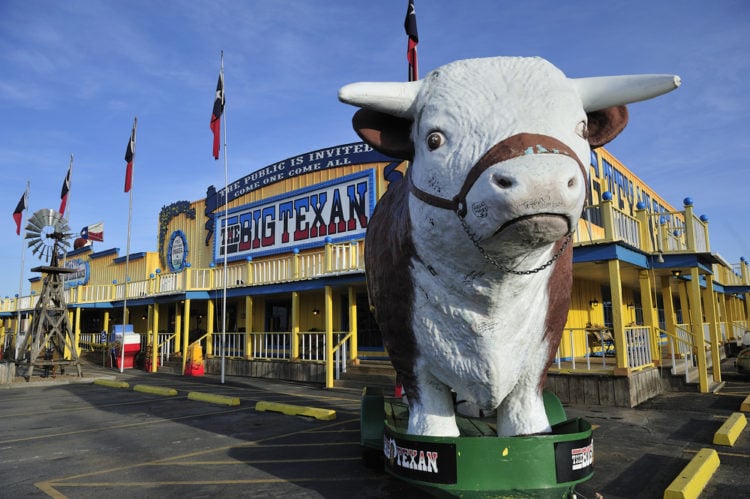
Amarillo stands as the 14th-largest city in Texas and serves as the seat of Potter County. The city ranks impressively nationwide, placing first for low housing costs and third for population growth rate.
The Amarillo metro area excels in multiple quality-of-life categories. It ranks sixth nationally for crime rates and 24th for education quality.
Diverse neighborhoods offer various living options throughout the city. Wolflin features charming historic homes, while the Colonies provides contemporary living spaces for modern residents.
The local economy thrives partly due to the region’s agricultural heritage and beef industry. Amarillo maintains strong community spirit through local business support and regular community events.
Housing costs remain notably affordable compared to other Texas cities. The combination of low living expenses and steady job market growth makes Amarillo attractive to new residents seeking economic opportunities.
21. Lubbock
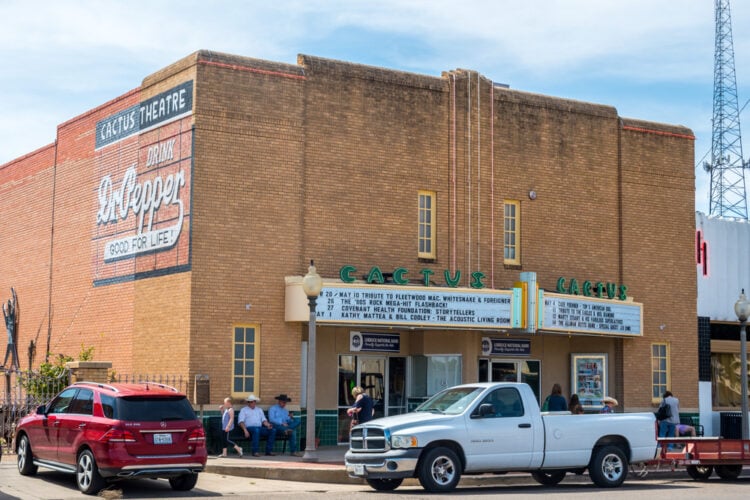
Lubbock sits in West Texas and serves as home to Texas Tech University. The city combines affordability with cultural amenities that attract both families and young professionals.
The cost of living remains below national averages. Housing options range from historic neighborhoods like Tech Terrace to newer developments in areas such as South Overton and West Carlisle.
Several quality neighborhoods stand out for different lifestyles. Lakeridge offers upscale homes for families seeking quieter environments. The Heart of Lubbock provides historic charm with older homes in central locations.
Milwaukee Avenue features newer construction with good schools. Northridge and WHAM neighborhoods also rank among popular residential areas.
The city maintains a thriving music scene and hosts cultural events throughout the year. Texas Tech University contributes to the area’s educational reputation and brings energy to the community.
Lubbock’s warm climate allows for year-round outdoor activities.
20. Midland
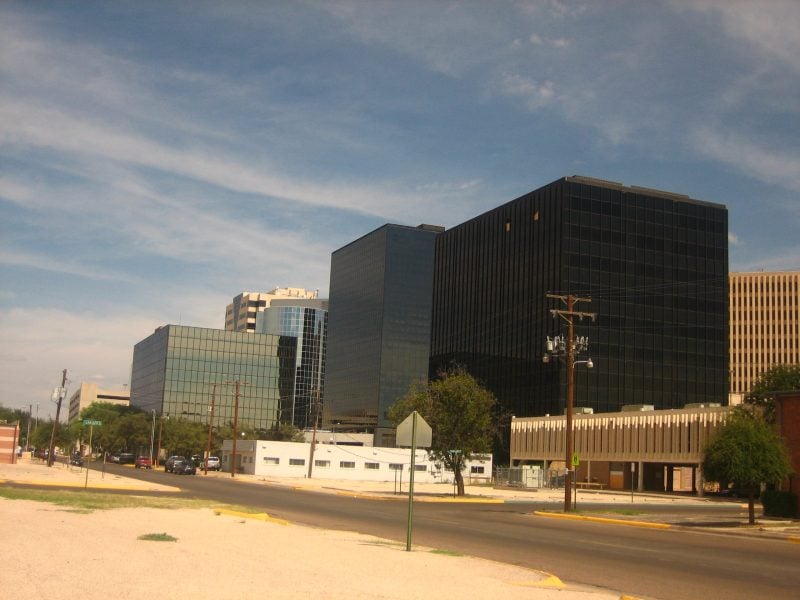
Midland sits in the heart of West Texas, serving as a major hub in the oil-rich Permian Basin. The city combines small-town charm with big-city amenities, creating a unique living experience for residents.
The local economy thrives on the energy sector, providing stable employment opportunities. This economic strength has helped Midland earn recognition as one of the top places to live in Texas.
Green Tree stands out as a premier neighborhood, featuring a planned community with country club access and golf courses. Grassland Estates offers upscale living with large homes and spacious lots for families seeking luxury.
Greathouse provides family-friendly neighborhoods with quality schools and parks nearby. The area caters well to residents raising children.
Cultural attractions include the Museum of the Southwest, while outdoor enthusiasts enjoy Beal Park and the I-20 Wildlife Preserve. These amenities add recreational value to daily life in Midland.
19. Arlington
Arlington sits strategically between Dallas and Fort Worth in North Central Texas. The city provides residents with convenient access to both metropolitan areas while maintaining its own distinct identity.
With a population of nearly 395,000, Arlington offers a dense suburban atmosphere. Most residents own their homes and enjoy numerous parks and coffee shops throughout the city.
The location proves ideal for commuters. Dallas lies approximately 20 miles away, while Fort Worth sits 15 miles distant. DFW International Airport is just 12 miles from the city center.
Arlington serves as North Texas’s entertainment hub. The city hosts professional sports teams and world-class venues that attract visitors from across the region.
Public transportation consists primarily of bus routes connecting key areas. Major highways including I-20 and I-30 provide direct access to surrounding cities.
18. Garland
Garland sits in northeastern Dallas County with a population of approximately 245,000 residents. The city spans 57 square miles between Dallas and Rowlett, bordered by Richardson to the north and Mesquite to the south.
This Dallas suburb offers affordable living costs while maintaining easy access to metropolitan amenities. Residents enjoy a dense suburban atmosphere where most people own their homes.
The city provides excellent educational opportunities through above-average public schools. Families and young professionals make up much of the population base.
Garland features numerous parks and coffee shops throughout its neighborhoods. The area maintains cultural diversity with various festivals and outdoor activities available year-round.
Top neighborhoods include Buckingham North and The Shores of Wellington based on market preferences. Housing quality varies significantly across different areas of the city.
The local economy remains diverse and stable, contributing to Garland’s recognition as one of the better places to live in the Dallas-Fort Worth metroplex.
17. Houston
Houston stands as Texas’s largest city and the fourth most populous in the United States. The city offers diverse neighborhoods that cater to different lifestyles and budgets.
The Houston area features strong job opportunities across multiple industries. Energy, healthcare, and aerospace sectors drive the local economy.
Housing options vary significantly throughout the metropolitan area. Some neighborhoods command higher prices due to better schools and lower crime rates.
The city’s cultural diversity creates vibrant communities with distinct character. Residents enjoy numerous parks, dining options, and entertainment venues.
Public transportation connects various districts, though many residents prefer driving. Commute times depend heavily on neighborhood choice and workplace location.
Houston’s warm climate appeals to those seeking year-round outdoor activities. The city experiences hot summers and mild winters typical of the Gulf Coast region.
16. Fort Worth
Fort Worth combines Western heritage with modern urban amenities. The city offers affordable housing options compared to neighboring Dallas while maintaining strong job growth.
Downtown Fort Worth provides high-rise living with excellent walkability and Trinity Metro access. Residents enjoy easy commutes and urban conveniences.
The Stockyards district preserves the city’s cowboy culture with rodeo events and cattle drives. This historic area attracts tourists and locals alike.
Arlington Heights appeals to families with top-rated schools and quiet residential streets. The neighborhood offers suburban comfort within city limits.
Westover Hills features large estates and upscale living near downtown. This exclusive area attracts affluent professionals.
The Cultural District houses renowned museums and art galleries. Residents access world-class cultural attractions year-round.
Southside offers vibrant nightlife and entertainment venues. Young professionals gravitate toward this dynamic neighborhood for its social scene and local dining options.
15. Dallas
Dallas stands as one of Texas’s premier metropolitan areas, offering residents a dynamic blend of urban amenities and economic opportunities. The city consistently ranks among the nation’s best places to live due to its strong job market and diverse neighborhoods.
The Dallas-Fort Worth metroplex provides numerous housing options across various price points. From trendy urban districts to family-friendly suburbs, residents can find communities that match their lifestyle preferences and budgets.
The area boasts excellent public schools and higher education institutions. Many neighborhoods feature low crime rates and access to quality amenities that enhance daily living.
Dallas offers a robust economy with opportunities across multiple industries. The city’s central location and major airport provide connectivity for both business and leisure travel.
Richardson neighborhoods like Cottonwood Creek South exemplify the quality residential areas available throughout the metroplex.
14. San Antonio
San Antonio combines historic charm with modern growth across diverse neighborhoods. The city offers options from bustling downtown areas to family-friendly suburbs like Alamo Heights and Stone Oak.
The iconic River Walk and Alamo anchor the city’s rich cultural heritage. San Antonio’s vibrant arts scene and numerous restaurants add to its appeal for residents.
Housing costs remain reasonable compared to other major Texas cities. The metro area provides good access to public schools and higher education institutions.
Crime rates vary significantly by neighborhood, with suburban areas generally offering better safety records. Stone Oak and Alamo Heights rank among the most desirable residential areas.
The warm climate attracts many newcomers, though the sprawling cityscape requires car dependency. San Antonio’s diverse population creates a welcoming environment for families and professionals.
13. Corpus Christi
Corpus Christi offers residents a unique blend of urban amenities and coastal living along the Gulf Coast. The city provides affordable housing options with home prices below the Texas state average.
Mustang-Padre Island stands out as the top neighborhood according to recent census data. This area combines beachfront access with quality residential communities.
The city earned recognition for its educational system, receiving an A+ grade for schools. Del Mar and Flour Bluff represent additional popular residential areas with distinct characteristics.
Residents enjoy year-round beach access and a bustling marina district. The coastal breeze and sun-drenched climate create an appealing environment for outdoor activities.
Crime rates vary significantly by neighborhood, making location selection important for safety considerations. The city’s diverse housing market accommodates various budgets and lifestyle preferences.
Employment opportunities exist primarily in tourism, shipping, and healthcare sectors.
12. Cedar Park
Cedar Park ranks among Texas’s most desirable places to live, earning national recognition as one of America’s best small cities. This Austin suburb sits 20 miles northwest of downtown and maintains a population of approximately 77,474 residents.
The city stands out as the third fastest-growing community in the US among similar-sized cities. Families are drawn to Cedar Park’s highly rated Leander Independent School District schools and affordable housing options compared to Austin proper.
Home prices exceed the Texas state average of $235,268, reflecting strong market demand. Most residents own their homes in this dense suburban environment filled with coffee shops and parks.
Top neighborhoods include Buttercup Creek for families, Twin Creeks with its golf course community, and Avery Ranch’s master-planned development. Cypress Creek offers newer construction near major employers.
The city provides easy access to Austin’s tech sector while maintaining a relaxed small-town atmosphere.
11. Flower Mound
Flower Mound consistently ranks among America’s best places to live. U.S. News & World Report placed it at No. 14 on its 2025 Best Places list.
The city sits about 30 minutes from downtown Dallas near Grapevine Lake. This location provides suburban charm with access to the DFW metroplex.
Flower Mound offers top-rated schools that attract families. The community maintains strong safety ratings and low crime rates.
The local economy provides stable employment opportunities. Job market strength contributes to the city’s high livability scores.
Home values exceed the Texas state average of $235,268. This reflects the desirability and quality of local neighborhoods.
Parks and recreational facilities are abundant throughout the area. Residents enjoy access to lake activities and green spaces.
The city combines small-town atmosphere with modern amenities. Professional workers and families find the environment appealing for long-term residence.
10. Corinth
Corinth stands out as one of North Texas’s most desirable suburban communities. This city of approximately 22,868 residents sits strategically between Dallas and Denton in Denton County.
The community offers a sparse suburban feel with tree-lined streets and well-maintained neighborhoods. Most residents own their homes, creating stability and investment in the area’s future.
Families gravitate toward Corinth for its excellent school systems and numerous parks. The city provides abundant recreational opportunities, including access to nearby Hickory Creek Park with scenic outdoor activities.
Corinth maintains lower crime rates compared to many Texas cities. The cost of living remains reasonable despite its proximity to major metropolitan areas.
Young professionals, families, and retirees all find appeal in Corinth’s balanced lifestyle. The city combines small-town charm with convenient access to Dallas employment centers and entertainment options.
9. Irving
Irving sits in the heart of the Dallas-Fort Worth metroplex, offering residents access to major employment centers and urban amenities. The city provides diverse housing options across multiple well-established neighborhoods.
Las Colinas stands out as a master-planned community featuring upscale residences and a prominent business district. The area combines luxury living with convenient access to dining and entertainment venues.
Valley Ranch and Hackberry Creek rank among the top family-friendly neighborhoods. These areas offer quality schools, safety, and strong property values that attract long-term residents.
The city maintains extensive parks and trail systems throughout its boundaries. Irving’s location provides easy commuter access to both Dallas and Fort Worth employment markets.
Housing options range from high-end apartments in urban centers to spacious single-family homes in quiet residential areas. The diverse neighborhoods accommodate various lifestyles and budget requirements.
8. McKinney
McKinney stands out as one of Texas’s most desirable cities in 2025. The city earned recognition as the best place for renters nationwide, beating 149 other cities.
Located in Collin County, McKinney ranks as the most affordable city in the United States. The cost of living sits below the national average while median household income exceeds the national figure by 43%.
The city offers excellent quality of life with strong public schools and low crime rates. Popular neighborhoods include Stonebridge Ranch, Craig Ranch, Eldorado, and Provine.
McKinney combines suburban charm with modern amenities. Residents enjoy access to parks, shopping centers, and dining options while maintaining proximity to Dallas employment opportunities.
The city’s rapid growth reflects its appeal to families and young professionals seeking affordable living without sacrificing quality.
7. Sugar Land
Sugar Land ranks as the third best place to live in the United States for 2025. This Houston suburb in Fort Bend County combines quality schools with strong job opportunities.
The city has a population of 109,735 residents. Most people own their homes in this sparse suburban community.
Sugar Land offers top 5% rankings nationally for affordability and employment. The area provides abundant parks and recreational facilities for families.
Located in southwest Greater Houston, Sugar Land serves as a popular high-end suburb. The city features numerous residential developments and local attractions.
Residents enjoy access to strong schools and job growth. The community provides a blend of convenience and quality amenities that attract new families each year.
6. Round Rock
Round Rock stands out as one of Texas’s premier suburban communities. The city earned recognition as the fourth-best place to live in the Southwest according to Livability’s 2023 rankings.
Located in Williamson County near Austin, Round Rock provides residents with excellent safety records and top-rated schools. The city has received awards for being among America’s safest communities.
With a population of approximately 124,000, Round Rock offers a dense suburban atmosphere where most residents own their homes. The city features an extensive park system and maintains a charming downtown district.
Economic opportunities abound in this fast-growing community. Round Rock provides easy access to Austin’s job market while maintaining its own strong local economy.
The city combines small-town charm with modern amenities and quality healthcare options. Round Rock’s blend of affordability, safety, and amenities makes it attractive to families and professionals seeking suburban living near Austin.
5. Frisco
Frisco has emerged as one of Texas’s most sought-after cities. The Dallas suburb earned recognition from MONEY Magazine as the top place to live in America in 2018.
The city boasts excellent public schools that consistently rank among the state’s best. Frisco Independent School District serves over 200,000 residents with top-tier educational programs.
Economic opportunities abound in this thriving metroplex community. The city offers abundant job prospects while maintaining close proximity to Dallas employment centers.
Families appreciate Frisco’s low crime rates and safe neighborhoods. The city provides numerous parks and recreational facilities for residents of all ages.
Housing options range from luxury communities to master-planned developments. Most residents own their homes in this dense suburban environment that balances urban amenities with residential charm.
4. Richardson
Richardson sits strategically between Dallas and Collin counties, offering residents access to major metropolitan areas. The city houses 118,269 people and provides an urban-suburban lifestyle mix.
The community features excellent educational opportunities and maintains a relatively low crime rate. Residents enjoy numerous restaurants, coffee shops, and parks throughout the area.
Canyon Creek stands out as an upscale neighborhood with top-rated schools and beautiful homes. Cottonwood Creek attracts families with its parks and welcoming atmosphere.
Heights Park offers mid-century homes with strong community connections. The Telecom Corridor appeals to young professionals seeking modern apartments near major employers.
Richardson’s central location provides career opportunities while maintaining reasonable living costs compared to nearby major cities. The area combines suburban comfort with urban amenities.
3. Plano
Plano stands out as one of Texas’s most desirable cities for residents seeking quality living. The city has earned recognition from U.S. News & World Report for its excellent amenities, education quality, and job opportunities.
Located in Collin County, Plano offers a dense suburban atmosphere with a population of 287,339. Most residents own their homes, contributing to stable neighborhoods and strong community ties.
The city excels in family-friendly features, ranking among Texas’s safest cities. Plano’s school system attracts families prioritizing education for their children.
Neighborhoods like Willow Bend feature luxury homes and golf courses, while areas such as Plano Park blend suburban and urban living styles. The city provides numerous restaurants, coffee shops, and parks for daily convenience.
Plano’s thriving job market supports both established professionals and career-focused individuals. The combination of safety, education, and economic opportunities makes it appealing to families, professionals, and retirees.
2. The Woodlands
The Woodlands stands as one of Texas’s premier communities, located in Montgomery County just north of Houston. This affluent suburb has earned national recognition for its exceptional quality of life.
The community boasts a population of approximately 116,916 residents. Most residents own their homes in this dense suburban environment.
Niche has consistently ranked The Woodlands among America’s best places to live. The community has received top rankings multiple times, including being named the number one best city to live in America.
Families appreciate the excellent public schools throughout the area. The district maintains high academic standards and offers comprehensive educational programs.
Residents enjoy abundant shopping centers and dining options. The community features numerous parks and recreational facilities for outdoor activities.
The Woodlands attracts both families and professionals seeking a high-quality suburban lifestyle. Its proximity to Houston provides access to urban amenities while maintaining a quieter residential atmosphere.
1. Austin
Austin stands as Texas’s vibrant capital city, combining a thriving tech industry with world-renowned music culture. The city attracts newcomers with its distinctive laid-back atmosphere and diverse economic opportunities.
Downtown Austin appeals to young professionals seeking urban living. High-rise condos and apartments provide convenient access to the business district and entertainment venues.
South Congress offers an eclectic neighborhood experience. Residents enjoy unique shopping, dining, and the area’s distinctive cultural character.
The city provides numerous neighborhood options catering to different preferences. Families can choose suburban areas with quality schools, while others may prefer walkable districts with active nightlife.
Austin’s tech scene continues expanding, creating job opportunities across multiple industries. The combination of career prospects and recreational activities makes it attractive to professionals and families alike.
Cost of living varies significantly by neighborhood, allowing residents to find options matching their budgets and lifestyle preferences.
Key Factors That Make Texas Cities Great to Live In
Texas cities consistently rank among the nation’s most desirable places to live due to their affordable housing markets, robust employment opportunities, and strong educational systems. These three pillars create environments where families and professionals can build successful, fulfilling lives.
Cost of Living Considerations
Texas offers significant financial advantages compared to many other states. The state has no personal income tax, allowing residents to keep more of their earnings.
Housing costs remain manageable in most Texas cities. Cities like San Antonio and Houston provide affordable homeownership opportunities with median home prices below national averages.
Key Cost Benefits:
- No state income tax
- Lower property taxes than coastal states
- Affordable utilities and transportation costs
- Competitive grocery and retail prices
Many Texas cities maintain cost of living indexes below 100, indicating affordability compared to the U.S. average. This financial advantage extends to everyday expenses like dining, entertainment, and healthcare services.
Job Market and Economic Growth
Texas maintains one of the strongest economies in the United States. The state leads in job creation across multiple industries including technology, energy, healthcare, and aerospace.
Major corporations continue relocating headquarters to Texas cities. Austin attracts tech companies, while Houston dominates energy and medical sectors.
Primary Growth Industries:
- Technology and software development
- Oil and gas production
- Healthcare and biotechnology
- Aerospace and defense manufacturing
The job market offers diversity that protects against economic downturns. Cities like Dallas-Fort Worth provide opportunities in finance, logistics, and telecommunications alongside traditional industries.
Quality of Education
Texas invests heavily in education infrastructure. Districts in Plano, The Woodlands, and parts of Austin consistently rank among the nation’s best performers.
Many Texas cities feature highly rated public school systems. These districts attract families seeking quality education without private school costs.
Educational Strengths:
- Well-funded school districts
- Strong STEM programs
- Excellent teacher-to-student ratios
- Advanced placement course availability
Higher education options abound throughout Texas. Major universities like UT Austin, Texas A&M, and Rice University provide research opportunities and skilled workforce development that benefit local communities.
Lifestyle and Amenities in Top Texas Locations
Texas cities deliver diverse cultural scenes through world-class museums and music venues, while extensive park systems and lakes provide year-round outdoor recreation. The dining landscape spans from authentic barbecue joints to upscale international cuisine, complemented by thriving entertainment districts.
Cultural Attractions and Events
Austin anchors Texas’s cultural scene with the annual South by Southwest festival and Austin City Limits Music Festival. The city houses over 250 music venues and maintains its “Live Music Capital of the World” designation.
Houston operates the largest theater district in the United States outside of New York. The Museum District contains 19 institutions, including the Museum of Fine Arts and Space Center Houston.
Dallas features the Arts District with the Dallas Museum of Art and Nasher Sculpture Center. The city hosts the State Fair of Texas, attracting over 2 million visitors annually.
San Antonio preserves history through the Riverwalk and Alamo complex. Fiesta San Antonio brings 3.5 million people to the city each April for cultural celebrations.
Fort Worth’s Cultural District includes the Kimbell Art Museum and Modern Art Museum. The Fort Worth Stock Show and Rodeo represents the largest livestock show in the United States.
Outdoor Recreation Opportunities
Lake Travis near Austin provides 270 miles of shoreline for boating and swimming. Zilker Park hosts festivals year-round and offers kayak rentals on Lady Bird Lake.
Buffalo Bayou Park in Houston spans 160 acres with hiking trails and paddling opportunities. The city maintains 380 parks covering 37,000 acres total.
White Rock Lake in Dallas offers a 9.3-mile trail for cycling and running. The Trinity River Corridor provides additional green space with over 20 miles of trails.
San Antonio features the River Walk system extending 35 miles through the city. Brackenridge Park covers 343 acres and includes the San Antonio Zoo.
Sugar Land maintains 95 parks and recreation facilities. The community offers golf courses, tennis centers, and extensive trail networks connecting residential areas.
Dining and Entertainment Scenes
Austin houses over 4,000 food establishments, from renowned barbecue at Franklin Barbecue to food truck clusters. The Rainey Street Historic District transforms old homes into bars and restaurants.
Houston claims the most diverse restaurant scene in Texas with authentic Vietnamese pho, Mexican tacos, and Gulf Coast seafood. The city supports over 10,000 restaurants representing cuisines from 70 countries.
Dallas features upscale dining in Bishop Arts District and Deep Ellum’s live music venues. The city operates professional sports teams across four major leagues, providing year-round entertainment options.
San Antonio specializes in Tex-Mex cuisine and local favorites like puffy tacos. The Majestic Theatre and Tobin Center present touring Broadway shows and concerts.
Plano offers family-friendly entertainment through the Shops at Legacy and Arbor Hills Nature Preserve. The city maintains easy access to Dallas entertainment while providing suburban dining options.



